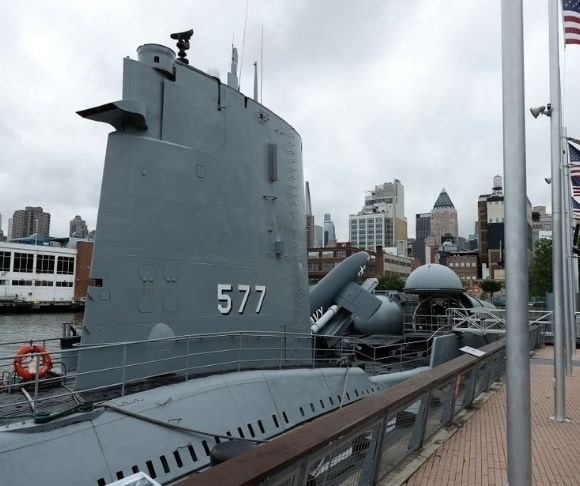Sometimes the solution to a problem has been in plain sight all the time. For example, while world leaders attending COP26 dithered over how to reduce reliance on fossil fuel, the U.S. Air Force has taken the initiative to explore powering Eielson Air Force Base in Alaska with the first practical nuclear “microreactor.” Similar small modular models have been powering Navy ships since 1954, when the first nuclear-powered submarine, USS Nautilus, was commissioned. According to the World Nuclear Association, such naval vessels are commonplace today. More than 160 ships are propelled by small reactors, some having more than one. The total number of oceangoing atomic power plants is more than 200.
 The safety record for small U.S. nuclear reactors is flawless. As the World Nuclear Association points out, “The US Navy has accumulated over 6,200 reactor-years of accident-free experience involving 526 nuclear reactor cores over the course of 240 million kilometers [129.6 million nautical miles], without a single radiological incident, over a period of more than 50 years.”
The safety record for small U.S. nuclear reactors is flawless. As the World Nuclear Association points out, “The US Navy has accumulated over 6,200 reactor-years of accident-free experience involving 526 nuclear reactor cores over the course of 240 million kilometers [129.6 million nautical miles], without a single radiological incident, over a period of more than 50 years.”
At long last, microreactors are being planned to power military communities. World Nuclear News quoted Assistant Secretary for Environment, Safety, and Infrastructure Mark Correll, saying, “Microreactors are a promising technology for ensuring energy resilience and reliability and are particularly well-suited for powering and heating remote domestic military bases like Eielson Air Force Base.” According to James Conca, writing for Forbes:
“Eielson is currently powered by its own coal plant, which typically produces about 14 MWe (Megawatts), by burning up to 800 tons of coal each day. It also keeps 90 days’ supply on-site but needs a facility to thaw the coal, a liability in frozen environments that nuclear does not have. The base operates independently but can connect to the grid for uses such as frequency control.”
Eielson is not the only military installation hampered by the effects of extremely cold conditions during the winter. Numerous active-duty and reserve northern-tier military bases across the United States have the same limitations in securing reliable energy in a national emergency.
Congress has been interested in energy self-sufficiency for military bases to ensure readiness, and the Eielson project supports that goal. To that end, Congress included in the Fiscal Year 2022 National Defense Authorization Act the following legislative language:
“Not later than 180 days after the date of enactment of this Act, the Director of the Strategic Capabilities Office of the Department of Defense, in coordination with the Secretary of Energy, shall provide to the congressional defense committees a briefing on the development and current and predicted progress, of the ‘Project Pele’ effort to design, build, and demonstrate a prototype mobile nuclear microreactor.”
What are the microreactors planned for Eielson? The Government Accountability Office (GAO), in its Science, Technology Assessment, and Analytics publication, described them as “very small reactors usually generating less than 50 megawatts electric (MWe). They are seen as an alternative to small modular (50-300 MWe) or conventional reactors (often around 1,000 MWe).” The GAO goes on to explain that microreactors can be mobile and produced quickly, “and within weeks, transported and deployed to locations such as isolated military bases or communities affected by natural disasters.” Microreactors have the advantage of not emitting pollutants or carbon while producing electricity independently. As the GAO explained:
“Depending on the proposed design, microreactors would use either more mature conventional light water or less mature advanced reactor technologies. Many of the designs call for the use of fuel enriched up to 20% U-235 (high-assay, low-enriched uranium, or HALEU), which is currently unavailable in the commercial US market, and may also present proliferation and safety risks … Designs using light water cooling are nearing maturity, as they are based on components that are proven to be effective in large conventional reactors.”
The microreactors produce electricity just as the larger versions. A nuclear reaction creates heat that boils water, creating steam. The steam spins a turbine generator that provides electricity. When the GAO published its assessment of microreactors in February 2020, the article pointed out that the technology was in “the early stages of development.” With the benefit of time, Defense Department planners have scheduled the Eielson AFB project to be operating as a prototype in 2027.
 The microreactor project will have significant government oversight to ensure safety provided by the Department of Energy and the Nuclear Regulatory Commission. Along with efficient production of electricity, the GAO explained, the microreactors can be produced more quickly, less expensively, and more efficiently, and “the entire reactor could be factory assembled under controlled environment conditions with quality control procedures.”
The microreactor project will have significant government oversight to ensure safety provided by the Department of Energy and the Nuclear Regulatory Commission. Along with efficient production of electricity, the GAO explained, the microreactors can be produced more quickly, less expensively, and more efficiently, and “the entire reactor could be factory assembled under controlled environment conditions with quality control procedures.”
Developing and deploying nuclear reactors that produce clean energy, tailored to meet specific military base needs and furnish electricity to communities, is long overdue. The GAO put it this way: “… restoring power quickly following natural disasters would support the faster restoration of critical services such as hospitals, communications, and the water supply to the local community.” The winter freeze that left three million Texans without electricity when wind power failed is a recent case in point. Kudos to the Air Force for taking the lead in this important area.
The views expressed are those of the author and not of any other affiliation.
~ Read more from Dave Patterson.




